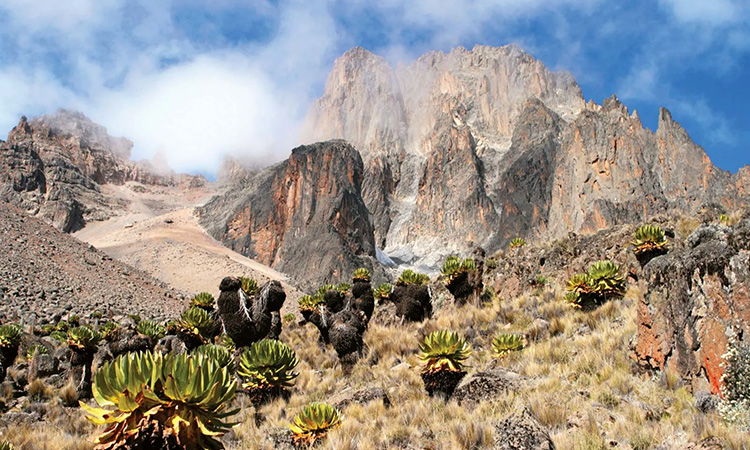
Embarking on a journey to conquer Mount Kenya, the second-highest peak in Africa, is an exhilarating adventure. With its rugged beauty and challenging terrains, scaling this majestic mountain requires careful preparation and knowledge. In this article, we present you with invaluable tips and tricks to enhance your chances of summiting success. From physical training and gear essentials to acclimatization strategies and route selection, we delve into well-researched information to help you conquer Mount Kenya with confidence.
Understand the Mountain
Before venturing into any climb, it is essential to familiarize yourself with the mountain’s characteristics. Mount Kenya boasts several peaks, with Batian (5,199 meters) and Nelion (5,188 meters) being the highest. Understanding the terrain, weather patterns, and altitude challenges will enable you to make informed decisions during your ascent. Research the different routes available, such as the popular Sirimon and Chogoria routes, and consider the time of year that offers the best climbing conditions.
Physical Preparation
Mount Kenya’s ascent demands physical stamina and endurance. Begin a training regimen that includes cardiovascular exercises, strength training, and hiking or stair climbing to build your fitness levels. Focus on strengthening your core, legs, and upper body to cope with the demanding uphill sections. Additionally, engage in regular aerobic activities to improve your lung capacity and endurance. Gradually increase the intensity and duration of your workouts to mimic the physical challenges you will face on the mountain. Don’t forget to consult with a healthcare professional before starting any rigorous training program.
Gear Essentials
Having the right gear is crucial for a successful climb. Invest in quality equipment that can withstand the mountain’s unpredictable conditions. Start with proper hiking boots that provide ankle support and good traction. Layered clothing is essential to manage temperature variations. Pack moisture-wicking base layers, insulating mid-layers, a windproof and waterproof outer shell, and a warm down jacket. Don’t forget essentials like gloves, hats, sunglasses, and sunscreen to protect against sunburn and cold temperatures. Carry a sturdy backpack with a hydration system and energy-rich snacks. It is also advisable to bring a headlamp, trekking poles, and a reliable sleeping bag suitable for cold weather.
Acclimatization Strategies
Acclimatization is crucial when climbing Mount Kenya to prevent altitude-related illnesses. Plan your itinerary to include gradual ascent and rest days at various altitudes to allow your body to adjust. Climbing too quickly increases the risk of altitude sickness, so listen to your body and don’t rush. Stay hydrated by drinking plenty of fluids throughout the climb, even if you don’t feel thirsty. Consider taking medication, such as Diamox, to help with acclimatization, but consult your doctor before using any medication. If you experience symptoms like headaches, dizziness, or nausea, descend to a lower altitude and rest until you feel better.
Mental Preparation and Team Dynamics
Mount Kenya climbing is not only a physical challenge but also a mental one. Prepare yourself mentally by maintaining a positive mindset, setting achievable goals, and visualizing your success. Surround yourself with supportive team members who share your goals and motivate each other during difficult moments. Communication and teamwork are crucial in navigating the mountain’s challenges, so establish clear roles and responsibilities within your group. Remember, a well-connected and supportive team enhances your chances of summiting success.
Safety and Environmental Considerations
Prioritize safety and environmental responsibility throughout your climb. Engage the services of experienced guides who are familiar with the mountain’s terrain and weather conditions. Follow their instructions and adhere to safety protocols at all times. Respect the fragile ecosystem by leaving no trace of your presence, carrying out all waste, and minimizing your impact on the environment. Be prepared for emergencies with a first aid kit and knowledge of basic wilderness first aid techniques.
Conclusion
Summiting Mount Kenya is a challenging and rewarding endeavor. By utilizing these well-researched tips and tricks, you can enhance your chances of success and create unforgettable memories along the way. Remember to respect the mountain, prioritize safety, and savor every step of the journey. Good luck as you embark on this extraordinary adventure!

Leave a Reply